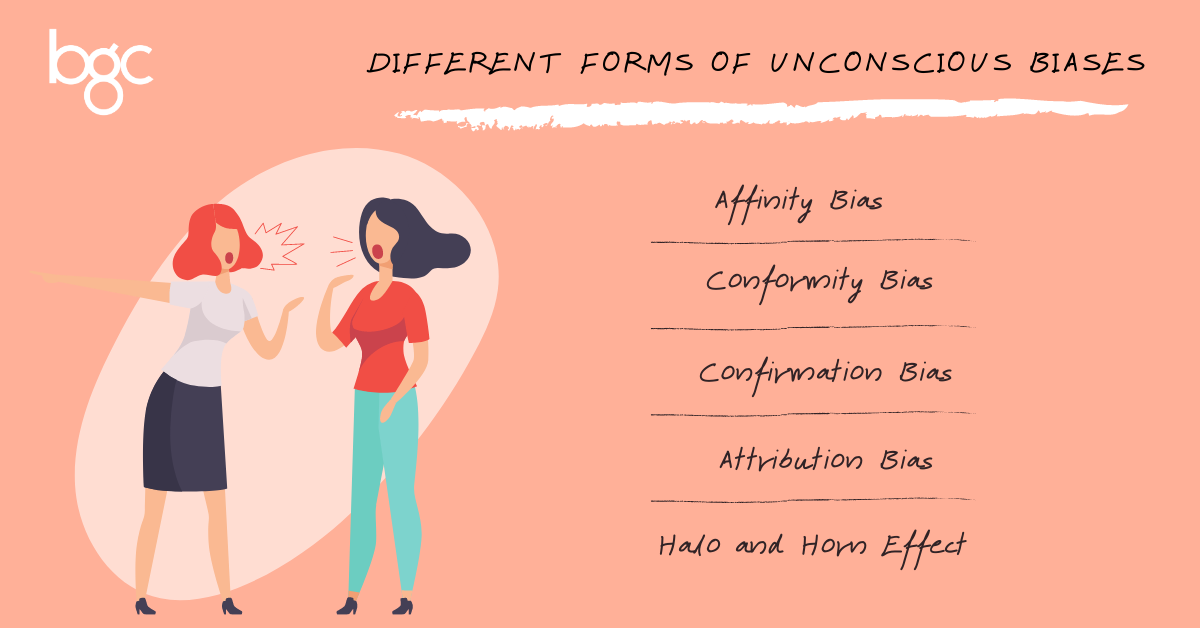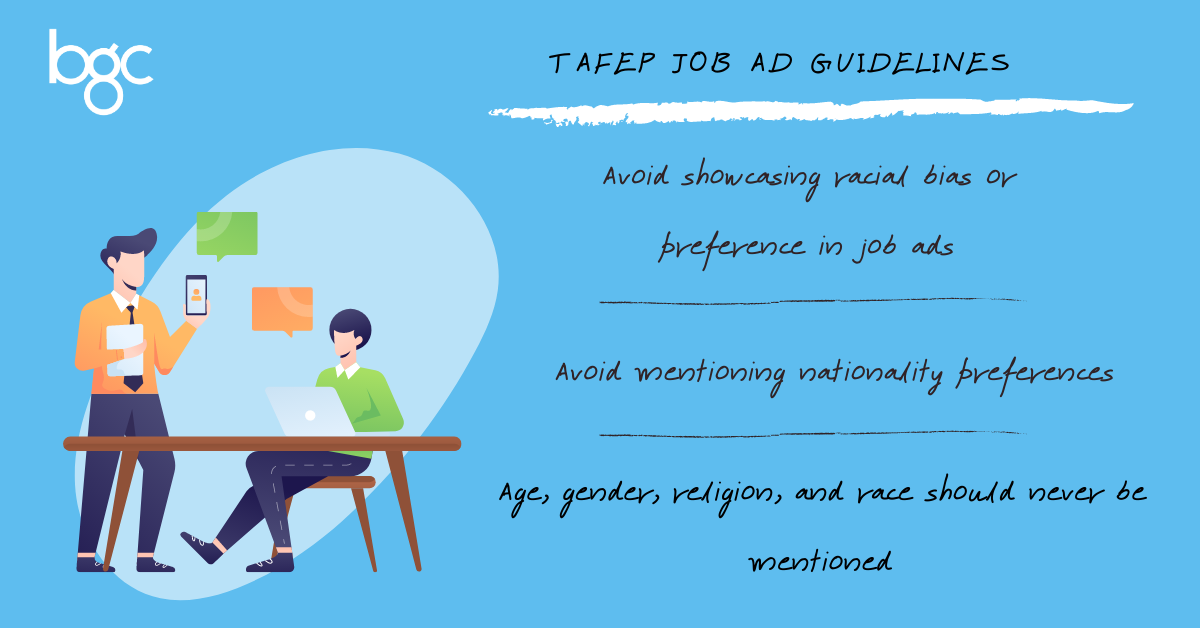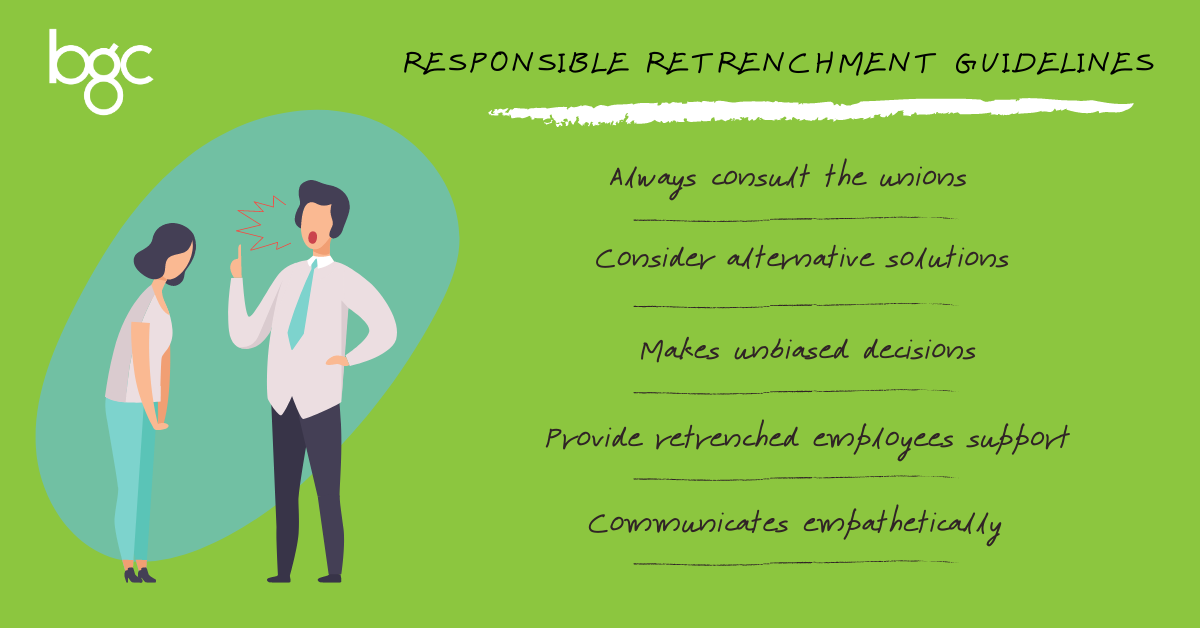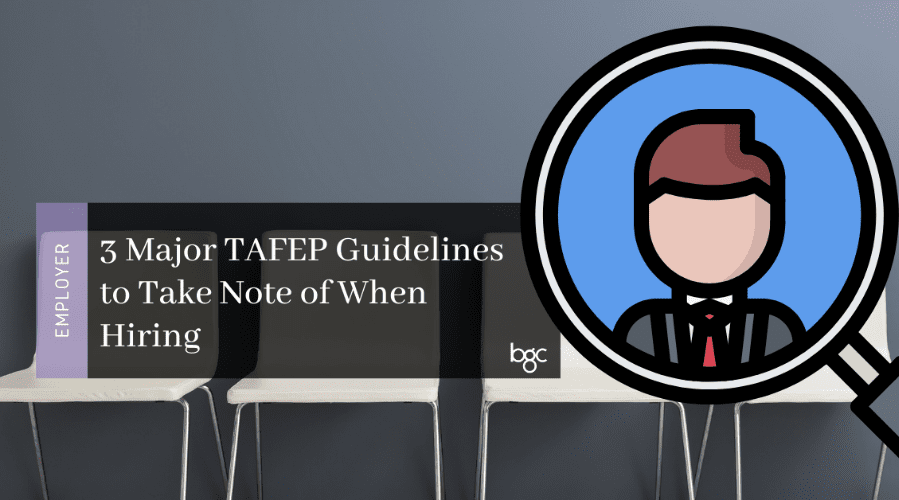When it comes to hiring in Singapore, there are a number of rules set in place to protect the general public from unfair discrimination. When it comes to recruiting and hiring people, it stands to reason that objective and a fair selection process should be incorporated. One without biases and discriminatory hiring practices.
But what about a process that goes beyond just hiring and recruiting? Are the rules for talent acquisition different from that of just recruiting? As an agency that outsources HR functions in Singapore, we are committed to providing information on how to hire and recruit fairly, without discrimination. In this article, we’ll outline the basic guidelines set in place by TAFEP for companies to follow during any hiring and talent acquisition process in Singapore. Let’s examine them below:
1. Don’t Fall Victim to Unconscious Biases

According to TAFEP’s website, the term unconscious bias can be defined as mental blind spots that shape most of our decisions based on social stereotypes. Unconscious bias often happens when people favour those who look like or share the same values as them. For example, a hirer might be drawn to recruit someone from the same area, educational or even racial background. This is known as affinity bias. Other forms of unconscious bias highlighted by TAFEP include:
A. Conformity Bias
This happens when a recruiter’s views are swayed by the others in the team. For instance, agreeing with what the other recruiters or interviewers say despite having an original and differing idea.
B. Confirmation Bias
Let’s say you have a belief that women don’t make good leaders in the workplace. Confirmation bias occurs when you look for information either consciously or subconsciously to confirm your belief about women in the workplace.
C. Attribution Bias
This might be harder to shed since first impressions matter in any interview stage. However, attribution bias takes place when one jumps to conclusions based on an observation. For example, thinking that a job candidate will come to work late everyday because they came into the interview late.
D. Halo and Horn Effect
The halo and horn effect occurs when a recruiter chooses to focus on a candidate's overtly positive or negative attributes. Anytime a hirer chooses to favour or dislike a job candidate that does not focus on features such as skills, experience, and the ability to perform a job. It is considered to be a hiring bias.
Learn more about the different types of biases in this TAFEP article here.
2. Watch Your Advertisement Requirements and Details

With such a diverse pool of citizens available here in Singapore. Organisations are required to eliminate everything and anything that can be perceived as discriminatory in their job advertisements. When a job advertisement is perceived to be discriminatory, it can be harder to find the right employee.
Below are some guidelines that TAFEP has listed to prevent discrimination on job advertisements:
A. Avoid showcasing racial bias or preference in job ads
Remember that if you fail to adhere to this guideline, you risk the organization being seen as discriminating employees based on their race. Phrases that showcase racial preference should always be backed up with a good reason. For example, “Mandarin speakers required in order to transcribe and translate audio from English to Mandarin” might be ok to post on a job advertisement. However reasons such as, “Mandarin speakers only” is seen as a form of discrimination as it shows racial preference.
B. Avoid mentioning nationality preferences
The same rule applies to any and all mentions of nationality on job ads as well. It is always best to not include phrases that exclude Singaporeans. Or to show that your organization prefers to hire non-Singaporeans.
C. Limiting factors such as age, gender, religion, and race should never be mentioned
In a good job advertisement, there will be no mention of any limiting factors such as age, gender, religion, or race. Unless a job candidate has to be of a certain age to complete their responsibilities legally (e.g. serve alcohol) there is no need to limit your candidates based on their age. If your role requires candidates to serve and handle meat or non-halal food, it’d be best to mention this in the advertisement instead of blanket statements such as “no Muslims” or “no vegetarians” allowed.
Pro-Tip: When there is little to no room for discrimination in a job advertisement, it sends a message to the rest of the employees in the organization. This ensures that there’s little room for potential discrimination and harassment cases.
Some articles on workplace rights you might want to check out include:
As a hiring manager or HR executive, one should be acquainted with the regulations set in place by TAFEP to avoid discrimination in job ads. Learn more about this touchy subject in this article here.
3. Don't Forget to Adhere to Responsible Retrenchment Details

In an article by the Straits Times, published in October 2020, TAFEP reportedly investigated several employers for discriminatory hiring practices. One of the many discriminations include unfair retrenchment payouts.
TAFEP’s website outlines the importance of responsible retrenchment. Remember, that this is already a sensitive part of your workforce’s life. When retrenchments occur, it can bring about feelings of anger, jealousy and vengeance. Therefore, it is best to comply with the guidelines set out by TAFEP to prevent any further distress amongst your employees.
Of course retrenchment is not part of the hiring process. However, we still recommend checking the guidelines out for responsible retrenchment. The guidelines for responsible resignation can be found on TAFEP’s website here.
For more HR themed blog posts, please check out the BGC Group blog here. What are some major anti-discrimination guidelines to take note of during the hiring process? Share them with us in the comments section below!
Read More: Understanding the Role of Talent Acquisition in Singapore
